Greece, the country of legend and ancient glory, boasts an incredible list of historical sites that remind us of its glorious past. From famous temples and sacred shrines to century-old theatres and palaces, each site has its own special story of gods, heroes, and ancient civilisations. Not only do these historical places in Greece reflect Greece’s architectural and creative abilities, but they also provide individuals with an unforgettable experience across time. It offers deep insight into its culture and enduring legacy in world history while it delves into Greece’s historical sites.
10 Historical Places To Visit In Greece
Before stepping foot in Historical places in Greece, remember that they’re not myths; every site is a fusion of culture, architecture, and history that reveals the essence of ancient Greek civilisation.
1. The Acropolis Of Athens
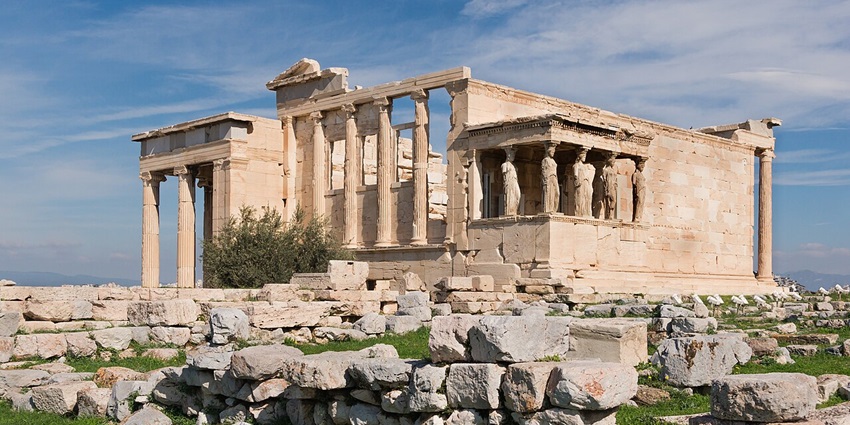
Photo: Jebulon / Wikimedia Commons
Set atop a rocky outcropping that overlooks Athens, the Acropolis is itself a powerful symbol of ancient Greece and its lasting cultural heritage. At its focal point stands the Parthenon, a stunning temple dedicated to the goddess Athena, a synthesis of the artistic and architectural prowess of classical Greece. As a UNESCO World Heritage property, the Acropolis encourages strollers across the ages to take a stroll down its history, savouring spots like the Erechtheion and its mythic Caryatids, the Temple of Athena Nike, and the imposing Propylaea.
Location: Athens, Greece
Major Attractions: Parthenon, Erechtheion, Temple of Athena Nike
2. Delphi
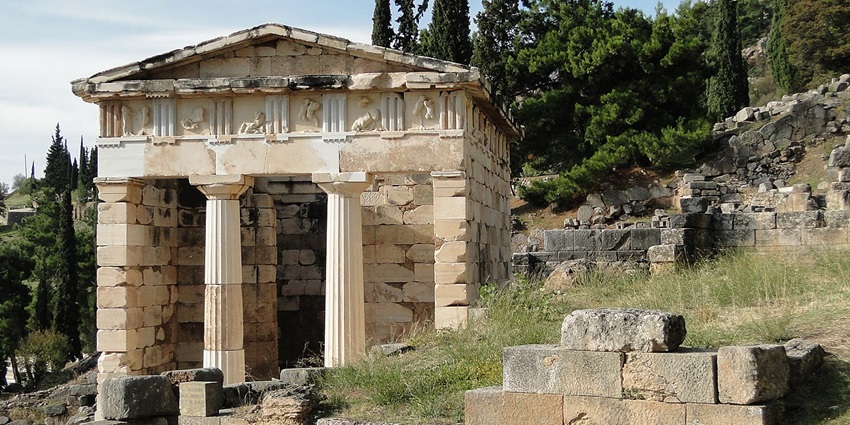
Photo: Bernard Gagnon / Wikimedia Commons
Delos Island, a small but significant island off Mykonos, is of immense mythological significance since the twin gods Apollo and Artemis were said to have been born here. A thriving religious and commercial hub in ancient Greece, today this sacred place is calm. Delos tourists can walk in giant archaeological sites, uncovering the colourful past of the island, from intricately preserved temples for different gods, to a huge ancient theatre, and family residences with opulent mosaics. The open-air museum atmosphere of the island provides an insight into ancient Greek religion, society, and culture like no other.
Location: Delphi, Central Greece
Major Attractions: Temple of Apollo, Ancient Theatre, Delphi Archaeological Museum
3. Meteora Monasteries
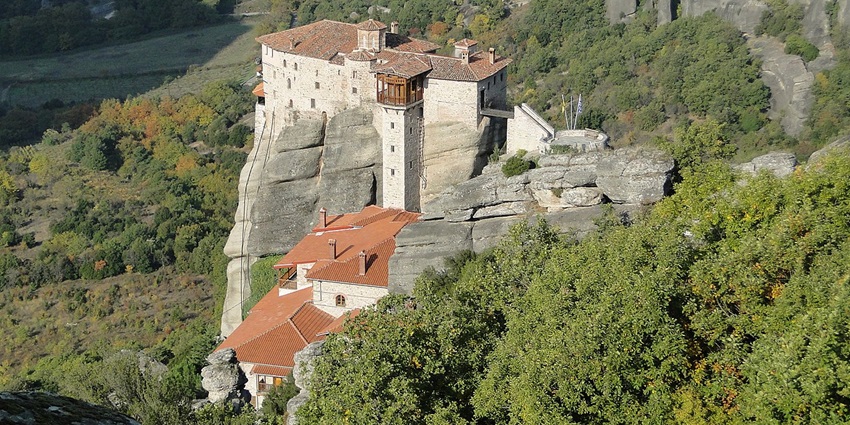
Photo: Bernard Gagnon / Wikimedia Commons
Meteora, or “floating in the air,” is Greece’s most stunning place, famous for its otherworldly rock pillars that tower above the Thessalian plains. Mounted on these columns of nature are ancient monasteries, originally constructed in the 14th century by monks in search of solitude, spiritual reflection, and protection from invaders. Of the initial twenty-four monasteries, six remain functional today, each having centuries-old traditions, artwork, and religious rituals. Visitors can walk into these sacred places, such as the Holy Monastery of Great Meteoron and the Monastery of Varlaam, and soak in the tranquillity of the landscape.
Location: Kalabaka, Thessaly
Major Attractions: Great Meteoron Monastery, Varlaam Monastery, Rousanou Monastery
4. Ancient Olympia

Photo: Annatsach / Wikimedia Commons
Olympia, the place of the handsome valley of the river Alpheios, is sacred as the birthplace of the Olympic Games and the most celebrated sanctuary of the ancient Greek world. Sacred to Zeus, the sanctuary was both cultic and athletic, where pilgrims and athletes came from all over the Greek world. Tourists can stroll over the remains of the magnificent Temple of Zeus, which housed one of the Seven Ancient Wonders, the Colossus statue of Zeus. The ancient Games stadium, where the first Games took place, is imbued with a sense of ancient sportsmanship.
Location: Peloponnese, Greece
Major Attractions: Temple of Zeus, Ancient Stadium, Archaeological Museum of Olympia
5. Knossos Palace

Photo: Przemek Pietrak / Wikimedia Commons
Knossos Palace, located close to Heraklion on Crete island, is Greece’s greatest archaeological site and the mythical centre of the Minoan civilisation. Typically linked to the myth of King Minos, the Labyrinth, and the Minotaur, the palace provides an intriguing glimpse into one of the most advanced early societies in Europe. The vast complex was the ceremonial and political centre of the Minoans. Its imposing halls, multi-story structure, warehouses, and colourful frescoes depicting scenes of day-to-day life, the natural world, and ritual religion can be seen.
Location: Heraklion, Crete
Major Attractions: Throne Room, Great Staircase, Fresco of the Prince of the Lilies
6. Mycenae
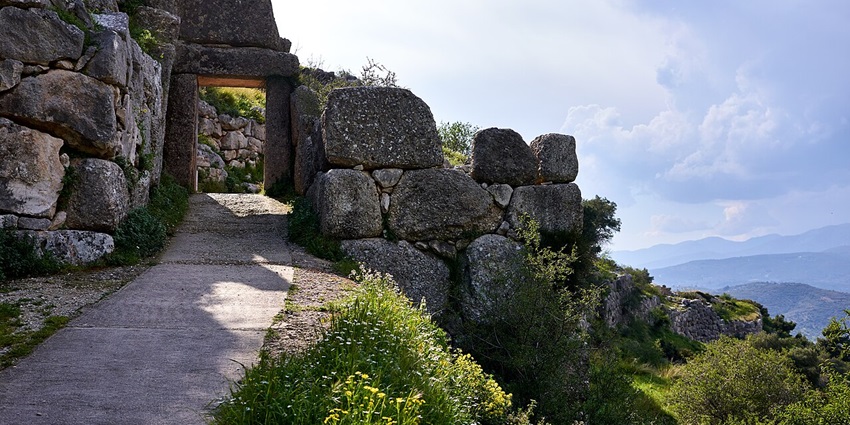
Photo: George E. Koronaios / Wikimedia Commons
Mycenae, a UNESCO World Heritage site in the north-east Peloponnese, was a powerful centre of Greek civilisation in the second millennium BC. Renowned as the mythical palace of King Agamemnon, it was a gateway to the Mycenaean civilisation that later Greek culture immensely drew upon. The site houses the legendary Lion Gate, an awe-inspiring work of ancient monumental architecture, which is a gateway to the citadel. There are also royal tombs, such as the well-known Shaft Graves and the Treasury of Atreus, and the remains of a tremendous palace complex.
Location: Peloponnese, Greece
Major Attractions: Lion Gate, Treasury of Atreus, Cyclopean Walls
7. Epidaurus Theatre
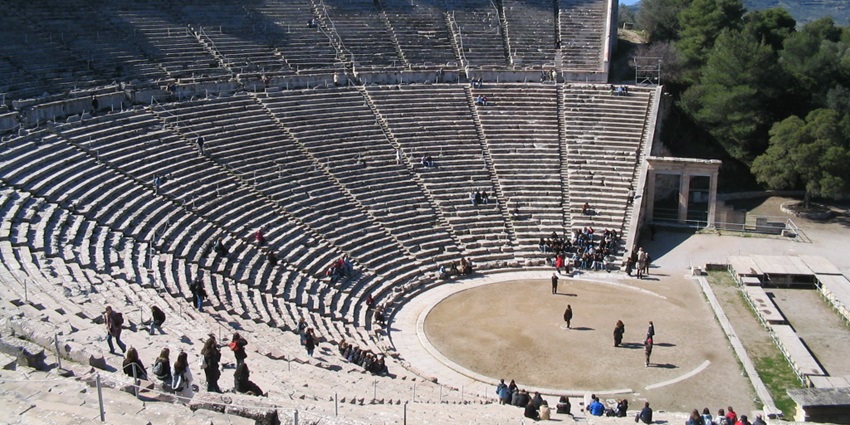
Photo: Sirabder87 / Wikimedia Commons
Epidaurus Theatre, renowned for its excellent acoustics, is Greece’s best-preserved ancient theatre. It was built during the 4th century BC as part of Asclepius’ sanctuary, the medical god, for religious and entertainment purposes. The theatre had a capacity for 14,000 spectators, and the configuration ensured that the slightest sound would find its way to every part of the seating area, an example of ancient engineering. Epidaurus Theatre is a bustling cultural centre today, presenting shows throughout the biennial Athens and Epidaurus Festival.
Location: Peloponnese, Greece
Major Attractions: Ancient Theatre, Asclepius Sanctuary
8. Delos Island

Photo: Geraki / Wikimedia Commons
Delos Island, a small but significant island off Mykonos, is of immense mythological significance since the twin gods Apollo and Artemis were said to have been born here. A thriving religious and commercial hub in ancient Greece, today this sacred place is calm. Delos tourists can walk in giant archaeological sites, uncovering the colourful past of the island, from intricately preserved temples for different gods, to a huge ancient theatre, and family residences with opulent mosaics. The open-air museum atmosphere of the island provides an insight into ancient Greek religion, society.
Location: Cyclades, Greece
Major Attractions: Temple of Apollo, Terrace of the Lions, House of Dionysus
9. Mystras
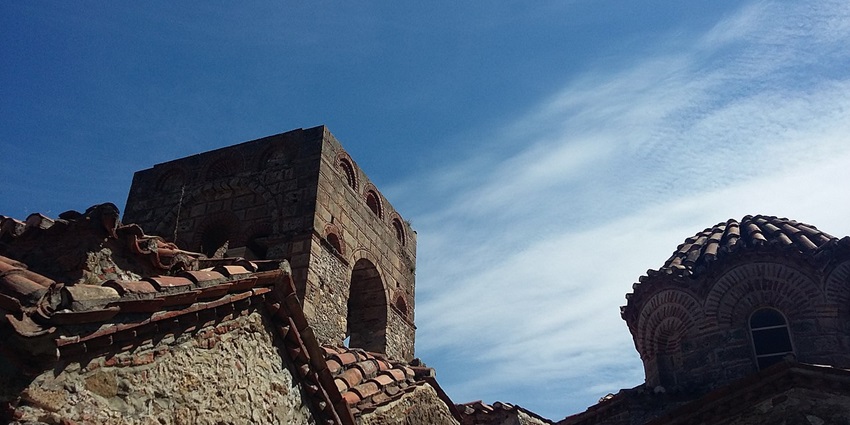
Photo: Despoina Vavelidou / Wikimedia Commons
Mystras, a medieval village south of Sparta, flourished in the Byzantine period as an important political and cultural centre. This breathtaking site pairs medieval Greek history and architecture with preserved palaces, churches, and monasteries dispersed across barren rocky terrain. These buildings have a tendency to be decorated with elaborate frescoes, which richly display religious iconography and Byzantine craftsmanship. Visitors to Mystras can walk through the old streets and explore the ruins of the once bustling city, learning even more about life in medieval Greece.
Location: Peloponnese, Greece
Major Attractions: Despot’s Palace, Agia Sophia Church, Pantanassa Monastery
10. Ancient Corinth

Photo: Eric CB Cauchi / Wikimedia Commons
Ancient Corinth was a dominant and influential ancient Greek city-state, located geographically close to the Isthmus of Corinth, which linked the Peloponnese region with mainland Greece. Being strategically located, it was a vital commercial and military centre. The ancient city of Corinth is a place that fascinates visitors with its interesting insight into its extensive history, like the massive Temple of Apollo and its tall Doric columns, and its historical significance. All of these sites in total attest to the religious, cultural, and strategic importance of the city in the past.
Location: Peloponnese, Greece
Major Attractions: Temple of Apollo, Acrocorinth, Archaeological Museum of Ancient Corinth
Exploring historical places in Greece offers a deep dive into the country’s rich past, revealing its remarkable history, iconic architecture, and vibrant culture. From ancient ruins to majestic temples, each site tells a story of Greece’s glorious legacy. Whether you’re wandering through Athens or visiting Delphi, the experience is unforgettable. Start your journey through time with TripXL for a memorable Greek adventure.
Cover Photo: Jebulon / Wikimedia Commons


 WhatsApp
WhatsApp
 Twitter
Twitter









